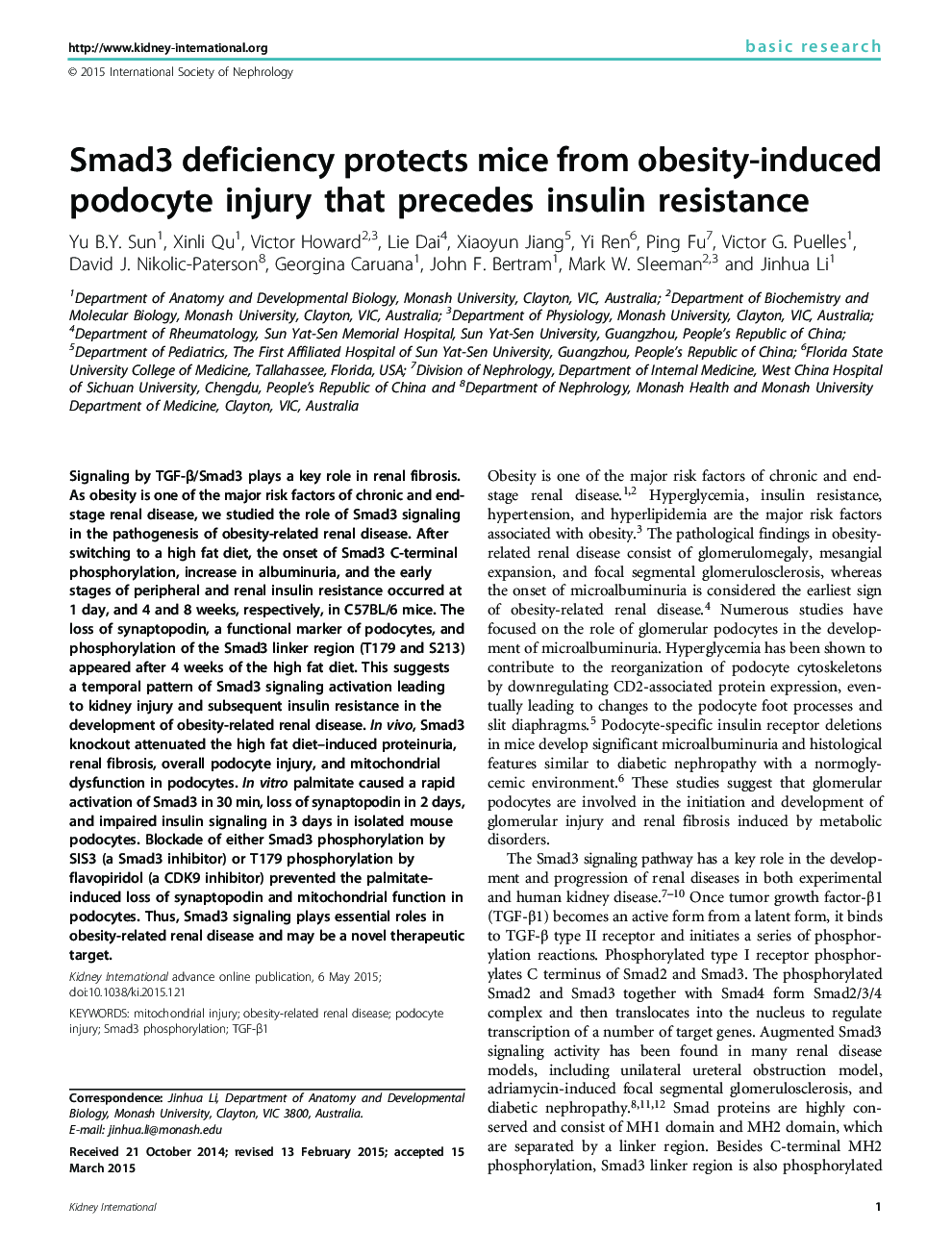| Article ID | Journal | Published Year | Pages | File Type |
|---|---|---|---|---|
| 6161329 | Kidney International | 2015 | 13 Pages |
Abstract
Signaling by TGF-β/Smad3 plays a key role in renal fibrosis. As obesity is one of the major risk factors of chronic and end-stage renal disease, we studied the role of Smad3 signaling in the pathogenesis of obesity-related renal disease. After switching to a high fat diet, the onset of Smad3 C-terminal phosphorylation, increase in albuminuria, and the early stages of peripheral and renal insulin resistance occurred at 1 day, and 4 and 8 weeks, respectively, in C57BL/6 mice. The loss of synaptopodin, a functional marker of podocytes, and phosphorylation of the Smad3 linker region (T179 and S213) appeared after 4 weeks of the high fat diet. This suggests a temporal pattern of Smad3 signaling activation leading to kidney injury and subsequent insulin resistance in the development of obesity-related renal disease. In vivo, Smad3 knockout attenuated the high fat diet-induced proteinuria, renal fibrosis, overall podocyte injury, and mitochondrial dysfunction in podocytes. In vitro palmitate caused a rapid activation of Smad3 in 30âmin, loss of synaptopodin in 2 days, and impaired insulin signaling in 3 days in isolated mouse podocytes. Blockade of either Smad3 phosphorylation by SIS3 (a Smad3 inhibitor) or T179 phosphorylation by flavopiridol (a CDK9 inhibitor) prevented the palmitate-induced loss of synaptopodin and mitochondrial function in podocytes. Thus, Smad3 signaling plays essential roles in obesity-related renal disease and may be a novel therapeutic target.
Related Topics
Health Sciences
Medicine and Dentistry
Nephrology
Authors
Yu B.Y. Sun, Xinli Qu, Victor Howard, Lie Dai, Xiaoyun Jiang, Yi Ren, Ping Fu, Victor G. Puelles, David J. Nikolic-Paterson, Georgina Caruana, John F. Bertram, Mark W. Sleeman, Jinhua Li,
